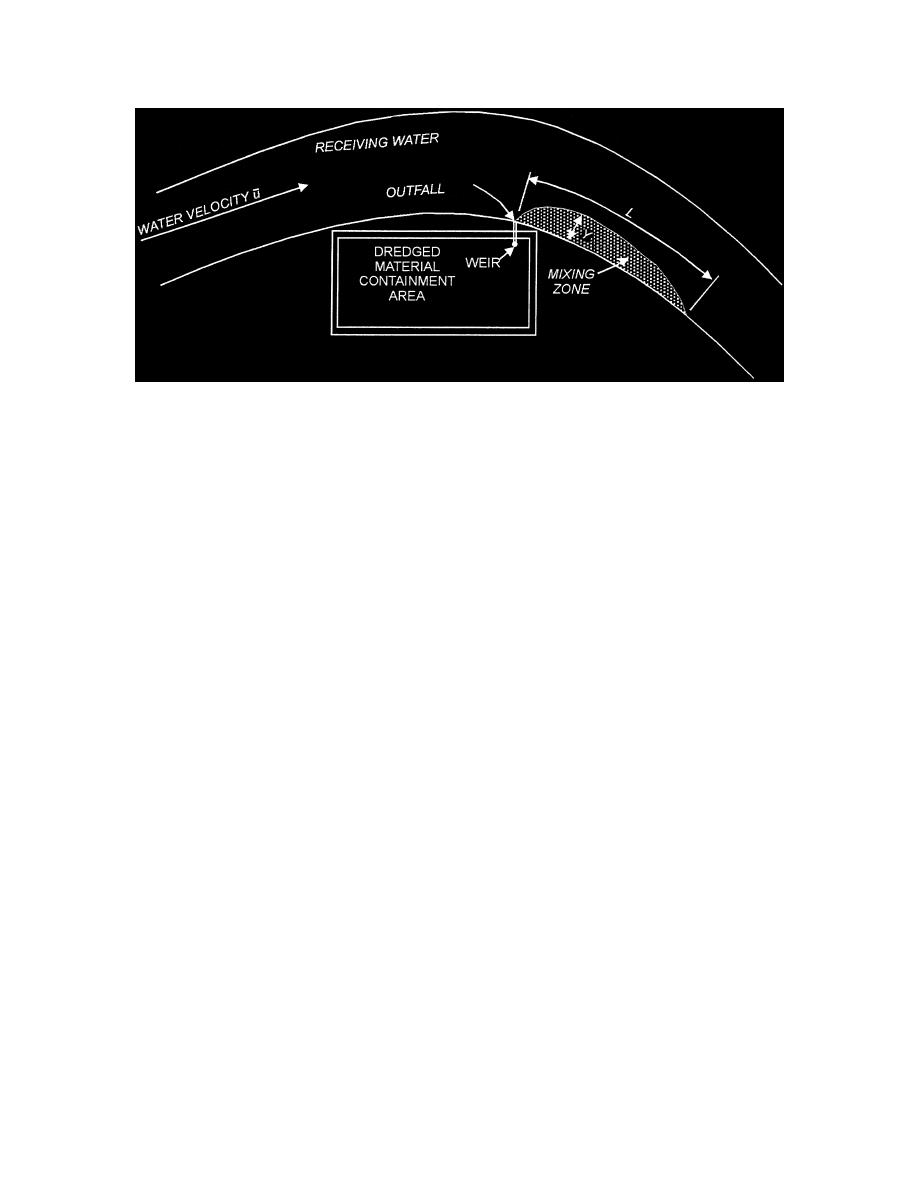 |
||
|
|
||
| |||||||||||||||
|
|
 Figure E-1. Schematic of typical single-source effluent discharging into a receiving water
body with unidirectional flow
E.4.2 Data requirements
The following data are required for evaluating mixing-zone sizes for
confined disposal area effluents:
a. Effluent concentrations at the point of discharge and receiving water
background concentrations for all contaminants of concern.
b. WQS applicable at the limit of the allowable mixing zone for all
contaminants of concern.
c. Depth, cross-sectional area, and current velocity of the receiving water
body during expected low flow conditions during the period of dredging.
d. Effluent volumetric flow rate.
E.4.3 Calculation procedure
a. Step 1. Verify that the assumptions on which the equations depend are
reasonable for conditions at the proposed discharge site.
b. Step 2. Use effluent, receiving water, and WQS concentrations of all
contaminants of concern to identify the critical contaminant. The critical
contaminant is the one that requires the greatest dilution, which will
define the boundary of the mixing zone. If mixing evaluations are
conducted for toxicity test results, the background concentration of
dredged material is assumed to be zero and the percentages of dredged
material are used to calculate the required dilution.
c. Step 3. Use receiving-water depth and velocity data to calculate a lateral
mixing coefficient. This coefficient is a measure of how rapidly the
effluent is dispersed through the receiving water.
E7
Appendix E Evaluation of Mixing in Surface Waters
|
|
Privacy Statement - Press Release - Copyright Information. - Contact Us - Support Integrated Publishing |